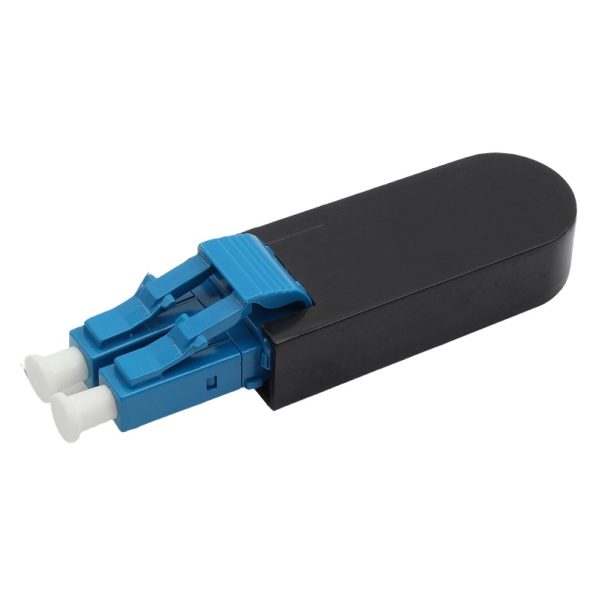In the fast-paced world of fiber optic communications, ensuring the reliability of networks is critical. One essential tool that network engineers rely on for this purpose is the Duplex LC Fiber Loopback Module. Though it might seem like a simple device, its role in network diagnostics is invaluable. This blog will explore the functionality, benefits, and applications of this small yet powerful tool, offering a deep dive into why it is indispensable for network testing.
What is a Duplex LC Fiber Loopback Module?
A Duplex LC Fiber Loopback Module is a testing tool designed to create a loop in a fiber optic network. It consists of a compact module with two LC (Lucent Connector) ports, capable of connecting two optical fibers. The module “loops” the signal sent out by a transceiver back to the source, allowing network engineers to simulate a complete data path. This closed-loop configuration makes it easier to identify potential issues such as signal loss, misalignments, or defective components.
The “duplex” aspect refers to the module’s ability to simultaneously handle two fiber optic connections: one for transmitting (TX) and one for receiving (RX). This is particularly useful in networks that rely on full-duplex communication, where data transmission and reception happen concurrently over two fibers.
Single-mode (SM) vs. Multi-mode (MM)
One of the most versatile features of duplex LC fiber loopback modules is their compatibility with both single-mode (SM) and multi-mode (MM) fiber types.
- Single-mode (SM) fibers are used for long-distance, high-bandwidth communication, often exceeding tens or hundreds of kilometers. SM loopback modules are designed to test these connections, ensuring low-loss transmission over vast distances.
- Multi-mode (MM) fibers, on the other hand, are suitable for shorter distances, typically found in data centers or local area networks (LANs). The loopback module can also simulate and test multi-mode environments to verify network performance within these more confined spaces.
How Does It Work?
When integrated into the network, the duplex LC fiber loopback module routes the optical signal from the transmitter (TX) port of the network equipment back to its receiver (RX) port. This creates a feedback loop, allowing the system to validate the integrity of the transmission.
By looping the signal back, the system can immediately detect problems such as:
- Signal degradation: Loss of signal strength can indicate faulty connections, dirty connectors, or damaged cables.
- Alignment issues: Misaligned fibers can cause poor signal quality, which is easily detected with loopback testing.
- Transceiver malfunctions: The module allows quick identification of any failures in the optical transceivers by verifying whether they correctly receive the looped signal.
Benefits of Using a Duplex LC Fiber Loopback Module
- Efficient Diagnostics: Loopback modules allow for rapid testing of the entire optical link. This means problems can be detected and isolated without the need for external equipment or extended downtime.
- Cost-Effective: As a simple plug-and-play device, the duplex LC loopback module provides an inexpensive solution to perform optical network tests, especially compared to more complex test equipment like optical time-domain reflectometers (OTDR).
- Versatile Testing: Since these modules support both single-mode and multi-mode fibers, they can be used across a variety of network infrastructures—from long-haul telecommunications to high-density data centers. This makes them an essential tool for network engineers working in diverse environments.
- Compact and Portable: The small size of these loopback modules makes them easy to transport and integrate into different network setups, enabling field technicians to carry out on-site testing without bulky equipment.
- Minimizes Downtime: Fiber loopback modules allow for quick validation of network integrity. Since they can pinpoint issues almost immediately, they help reduce the time it takes to troubleshoot network problems, leading to faster recovery times.
Applications of Duplex LC Fiber Loopback Modules
- Data Centers: With the increasing demand for high-speed data transmission, data centers must ensure their fiber optic networks are running smoothly. Duplex LC loopback modules help ensure that both transmit and receive functions are working as intended, allowing for proactive maintenance and testing.
- Telecommunications: Telecommunications infrastructure relies heavily on fiber optics for long-distance data transmission. Loopback testing ensures that the optical network is operating at peak performance, preventing costly downtime or service interruptions.
- Network Device Manufacturing: Fiber loopback modules are often used during the manufacturing process of transceivers and other fiber optic components to verify their performance before shipping them to customers.
- Field Testing: Field engineers often use these modules to test live networks during installation or maintenance. The plug-and-play nature of the device makes it easy to carry out quick diagnostics in real-time.
Conclusion
The Duplex LC Fiber Loopback Module may be a small and simple tool, but it plays a critical role in maintaining the health of fiber optic networks. Whether it’s diagnosing problems in a data center, ensuring long-distance fiber links in telecommunications, or testing network devices during manufacturing, this module provides an efficient, cost-effective, and reliable solution for optical network testing. Investing in this tool will not only ensure your network operates smoothly but also save time and resources during troubleshooting and maintenance efforts.
By understanding the functions and benefits of duplex LC fiber loopback modules, network engineers can enhance their testing processes and ensure the long-term stability of their fiber optic infrastructures.











